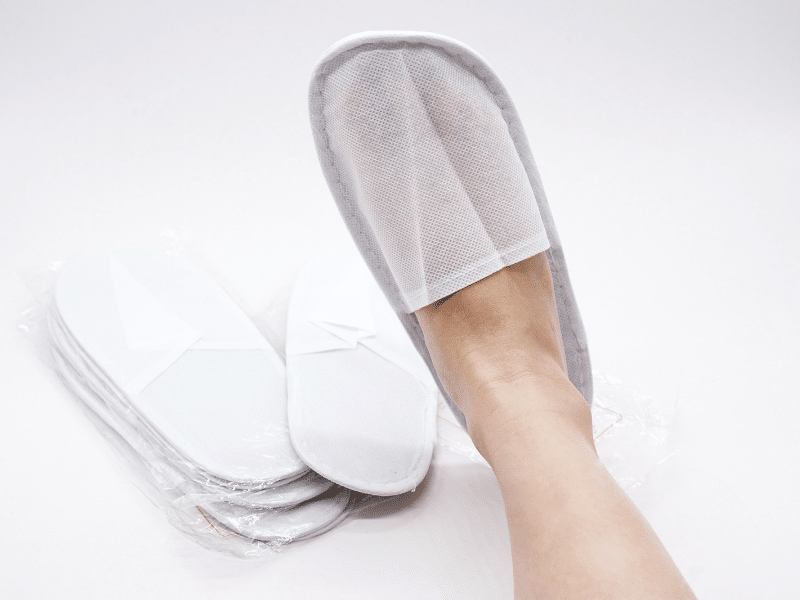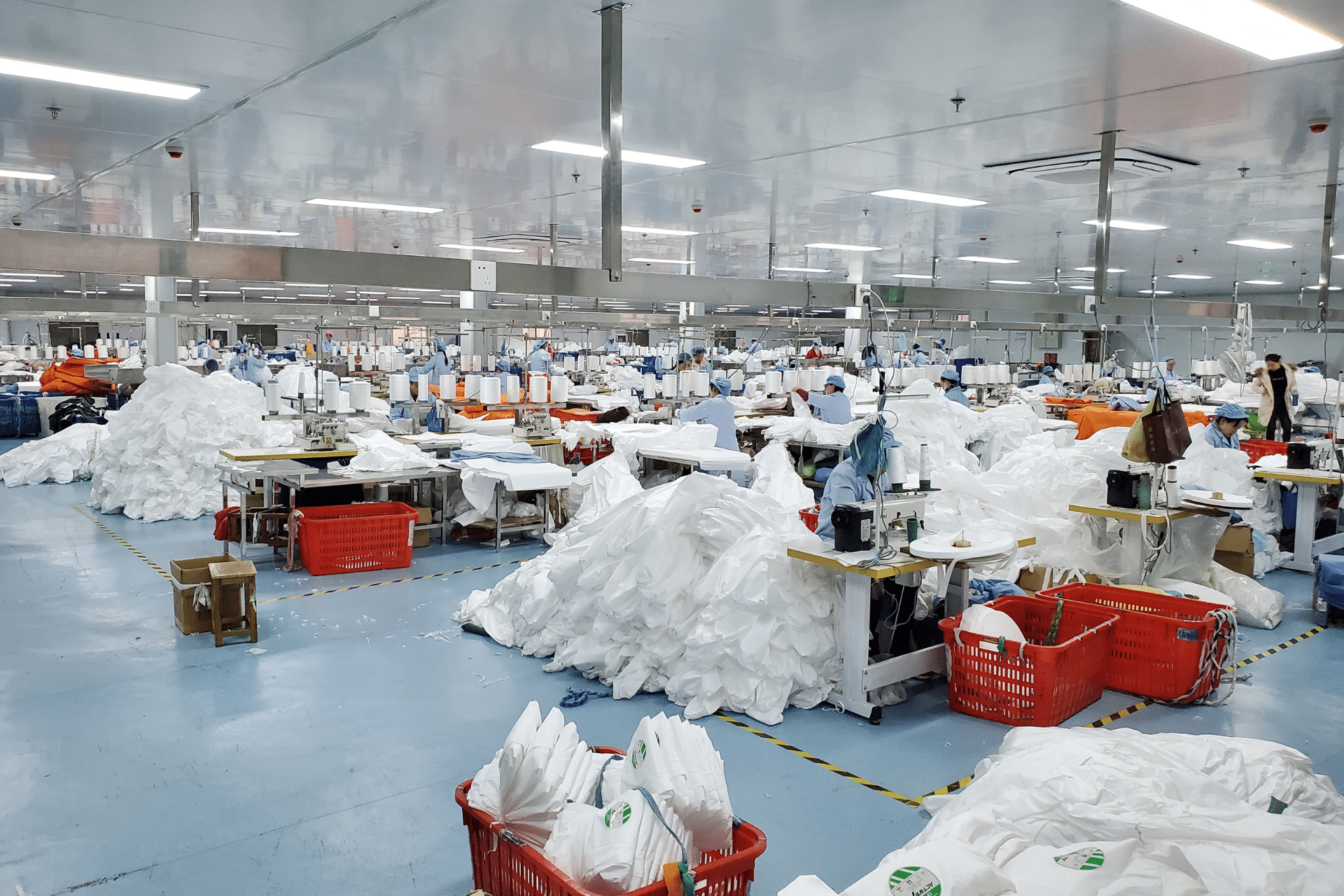Introduction to Disposable Hotel Slippers
According to data from relevant platforms, the usage rate of hotel slippers exceeds 90%. While guests might bring their own toothbrushes, toothpaste, shampoo, and shower gel in travel-sized bottles, few prefer to bring their own slippers due to issues with cleanliness, space, and packing convenience.
Therefore, a pair of light, comfortable, and clean hotel slippers is highly favored by guests. Many high-end hotels also use slippers as a symbol of their service quality, choosing superior materials and branding them with their logo. This not only provides guests with a comfortable experience but also invisibly enhances the hotel’s brand image.

Before Introducing Hotel Slippers, Let’s Understand Their Components: Sole, Upper, Toe Cap, and Edge Trim.
Taking disposable slippers as an example:
The materials for the toe cap and upper are generally similar, with the edge trim often made of non-woven fabric and plastic strips, while the soles are mostly made of EVA material.

Slipper Materials
Toe Cap and Upper: Materials commonly used for the toe cap and upper include non-woven fabric, coral fleece, velour, terry cloth, velvet, waffle, and more. Essentially, any fabric can be used for the slipper’s toe cap and upper. Typically, disposable non-woven fabric slippers are used by smaller inns and hostels; mid-range hotels often use velvet, fleece, or plush slippers; whereas high-end hotels prefer terry cloth (looped or sheared), waffle patterns, and cotton/linen/canvas slippers.
Sole: Most hotel soles are still made from EVA, but other materials include TPR, PVC, XPE, fabric, and dotted fabric soles. The thickness of the sole usually ranges from 4 to 7 millimeters, with thicker soles being more expensive.
EVA soles: A new type of environmentally friendly plastic foam material made from ethylene (E) and vinyl acetate (VA), available in linen and raw hemp types. The advantages of EVA soles are their strength, light weight, easy cleaning, and relatively low cost. They come in various thicknesses, with economy hotels usually opting for thinner soles around 3mm to 5mm; luxury hotels prioritize guest experience with sole thicknesses of 6mm or more, often 8mm or 9mm. Some hotels also add sponge underfoot to increase softness and improve slip resistance. Disadvantages: Absorbs water, not corrosion-resistant, not environmentally friendly, and gets dirty easily.
TPR soles: TPR is a thermoplastic rubber material, with variations including soft, hard, side-seam, rubber, tendon, blow molding, and adhesive bottoms. The advantages of TPR are its softness and waterproofness. Disadvantages: Heavy, poor wear resistance, low flexibility, poor bending resistance, and poor shock absorption.
PVC soles: A hard and brittle material with low impact resistance. Advantages include high strength and low cost. Disadvantages: Heavy, poor wear resistance, poor slip resistance, prone to breaking, poor breathability, and poor shock absorption.
XPE soles: A chemical cross-linked polyethylene foam material, which is more environmentally friendly, non-toxic, odorless, and elastic than other materials, commonly used in baby crawling mats and car foot mats.
Fabric soles: Some hotel slippers have fabric soles, such as canvas, chenille, or suede. These soles are suitable for wooden floors, offering softness, comfort, and ease of cleaning. Disadvantages: The main disadvantage is their lack of waterproofing and poor slip resistance.
Dotted fabric soles: Dotted fabric soles are not very common domestically as many find them inconvenient and not waterproof. However, they offer excellent slip resistance, softness, lightness, and are quiet, making them popular in many high-end hotels and hospitals. Disadvantages: Not environmentally friendly and not waterproof.











